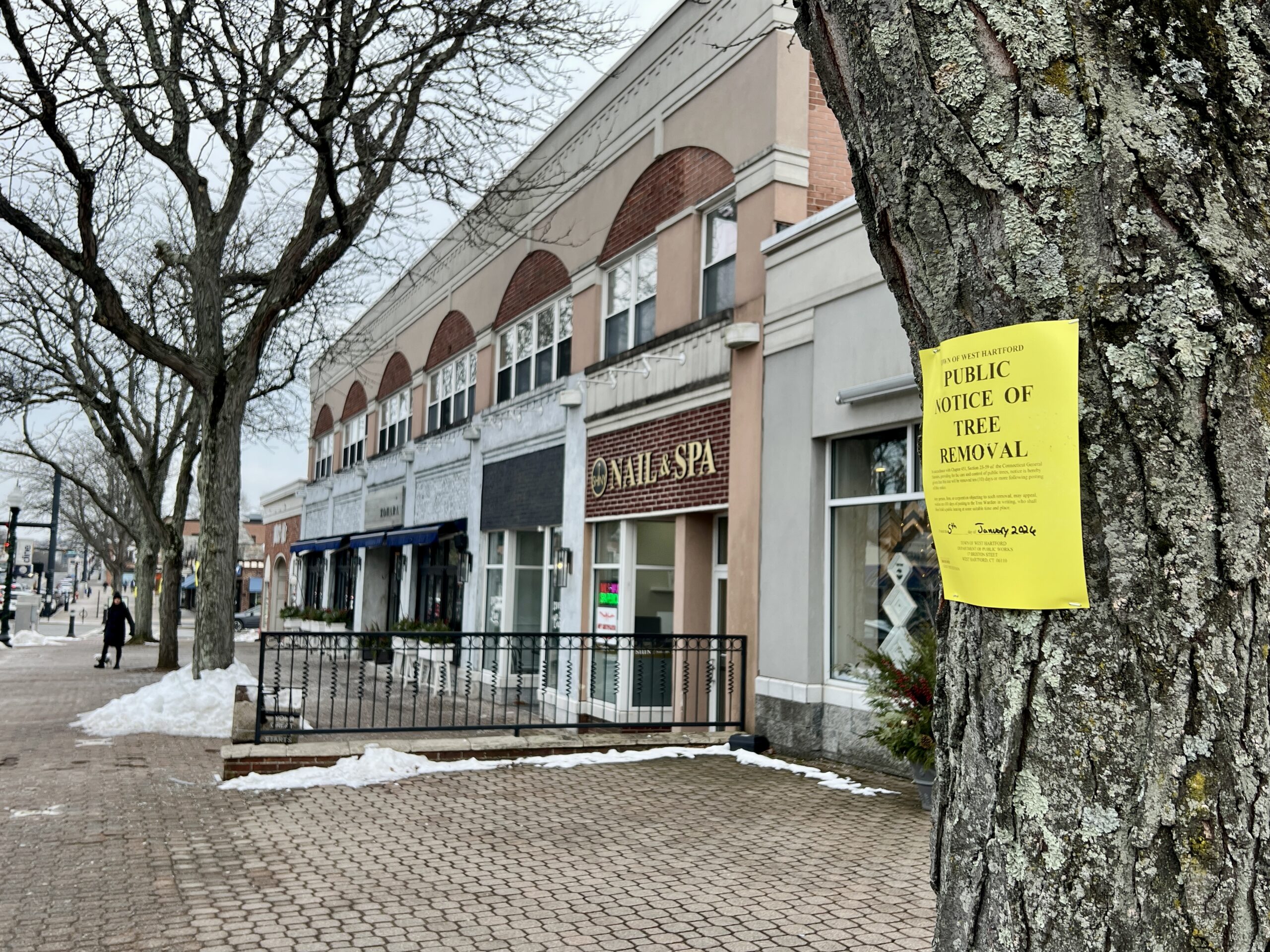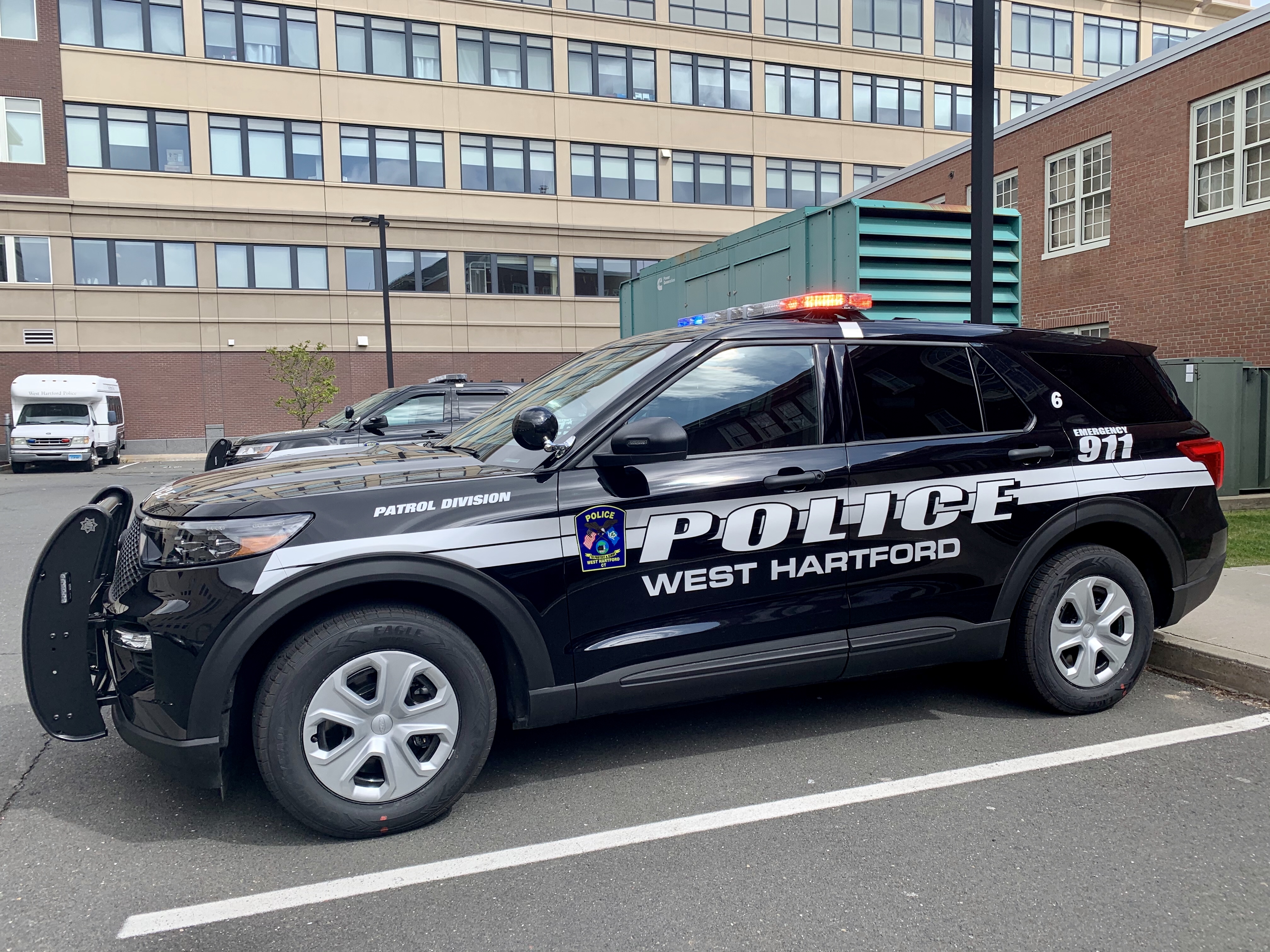Hidden History Remembers those Enslaved in West Hartford at Juneteenth Commemoration

Audio By Carbonatix
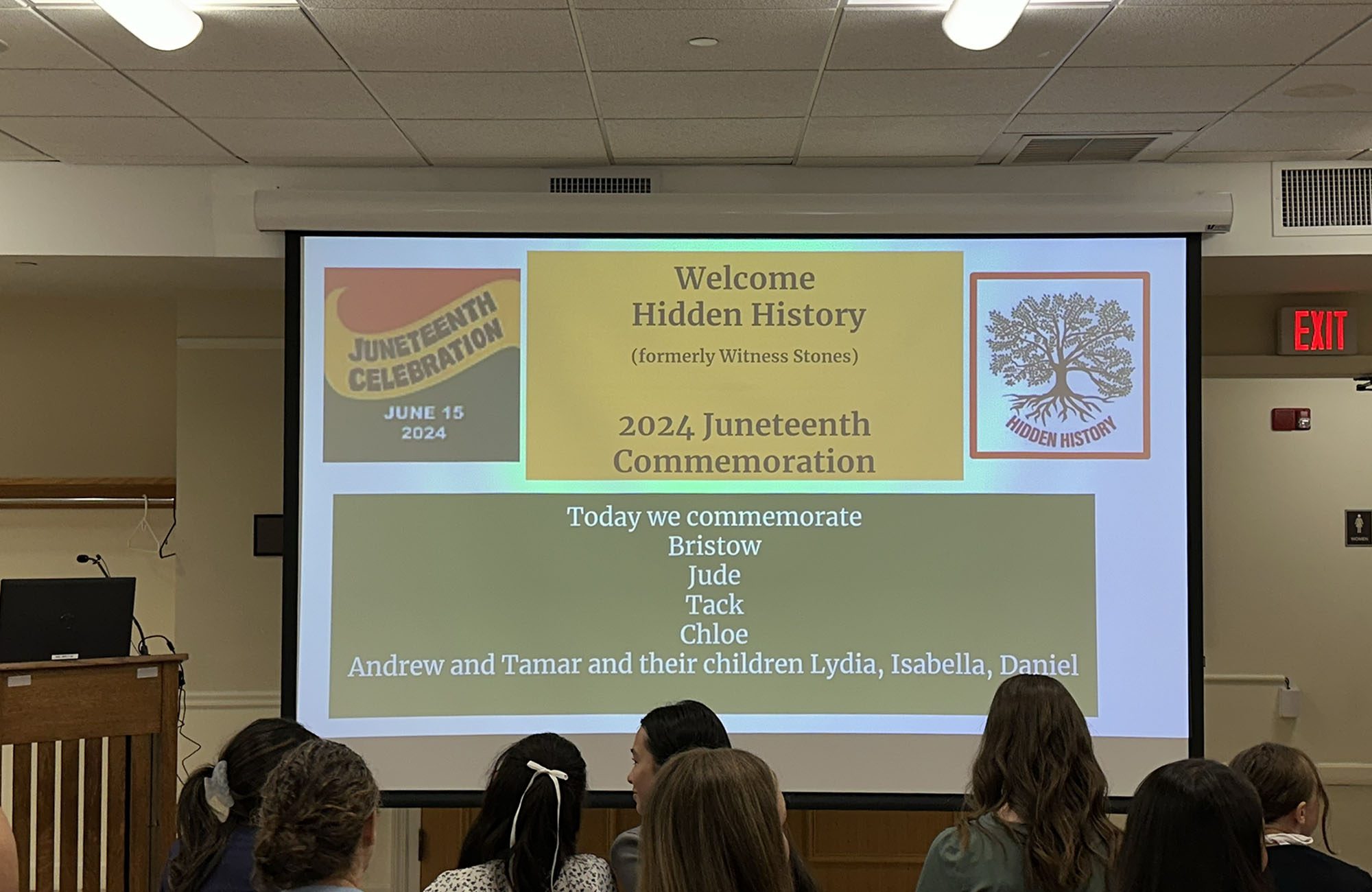
Hidden History held a Juneteenth commemoration to remember those who were enslaved. Photo Credit: Kaily Martinez
After students researched past enslaved people they then presented what they learned about them at a Juneteenth commemoration event hosted by Hidden History at the West Hartford Public Library’s Noah Webster Branch.
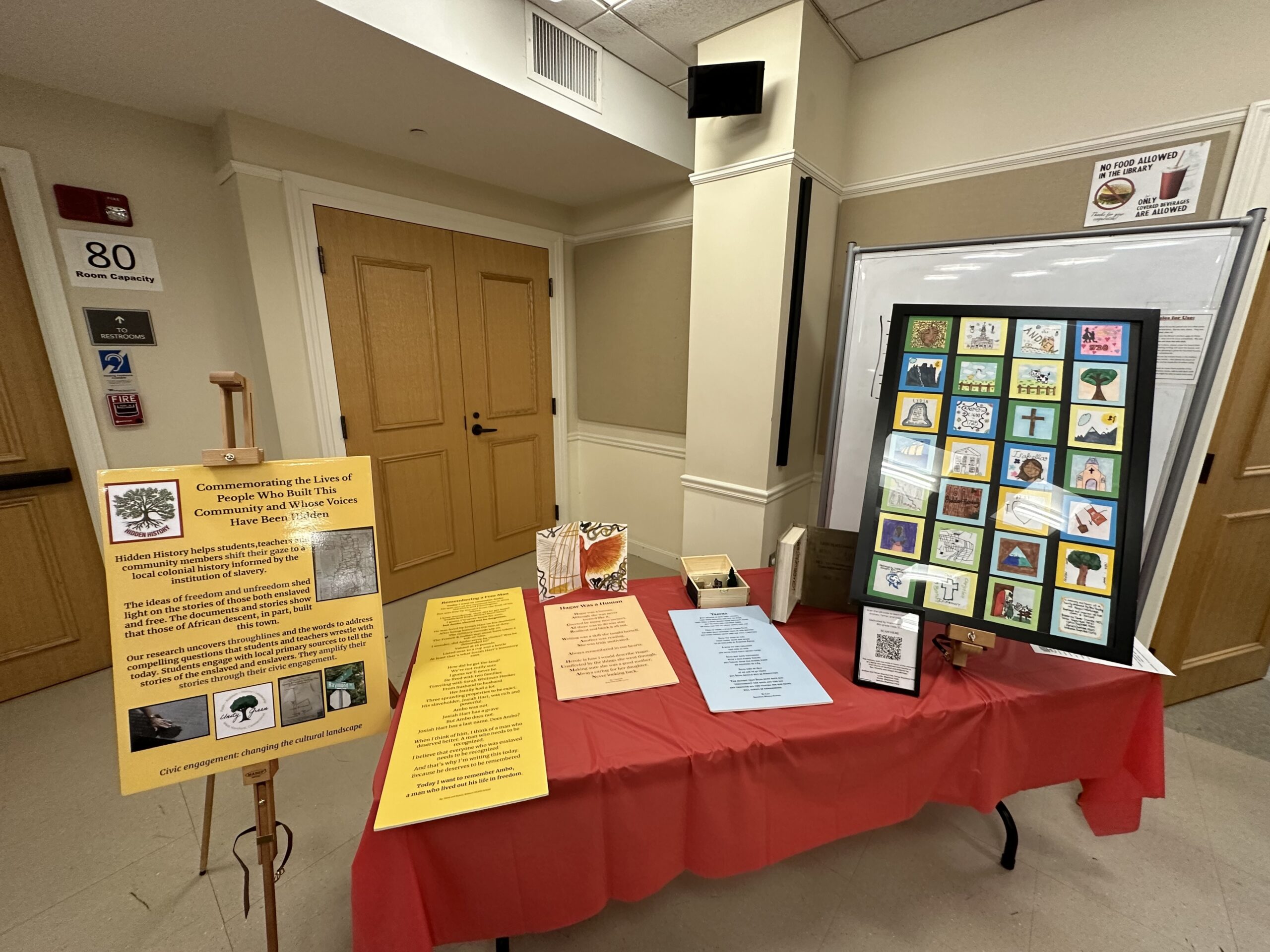
The artistic representation students created was based on each enslaved person they researched. Photo Credit: Kaily Martinez
By Kaily Martinez
History is an important aspect of who we are as people, and how well we remember it determines our future. Hidden History, a group that works with various schools in West Hartford to tell the stories of enslaved people to “amplify their stories through civic engagement activities,” held a Juneteenth commemoration at Noah Webster Library on Saturday, June 15.
The event entailed the work of students who used primary sources to tell in their own words the stories of nine enslaved people.
Welcoming the audience, Town Historian Tracey Wilson set the stage by introducing Town Council member Carol Anderson Blanks, who was also heavily involved in the program. Blanks expressed that continuing to uncover history, regardless of how uncomfortable it might be, is important in continuing to be better citizens and people.
“There is so much history that needs to be uncovered, not only in our town but in our entire country, and to see the young people sitting here this morning gives me hope because that means that there will be change,” she said.
Following Kayla Rosinsky, a 2023 Conard High School graduate who delivered a beautiful rendition of the national black anthem, Wilson provided more background on the group Hidden History. Wilson revealed their logo was inspired by the biggest and oldest tree in West Hartford.

Designs students at Watkinson Middle School created for the quilt that will be hung in Center Church. Photo Credit: Kaily Martinez
“This logo represents the hidden power of this tree, which we see in its roots, which you don’t ordinarily see, and in many ways, that’s the strength of the tree,” Wilson said. “We argue that knowing this hidden history gives us strength to understand where we are today.”
Providing a bigger impact, audience members were given one to three names of enslaved people. Going around the room, audience members read off the names and then stated if the enslaved person was freed. While there is limited – or no – information about the 59 enslaved people, reading their names reminded people how important it is to not forget them and to keep learning and searching for their history.
Wilson then introduced the audience to Flora, who, in 1796, was sold and forced to live in Stratford. In the presentation, there was a portrait of Flora’s silhouette next to her bill of sale. In 2021, artist Corey Pane used that silhouette to imagine a mural to honor Flora and others, and throughout her hair were the names of enslaved people as well as black transwomen who were murdered and those who were killed at the hands of the police.
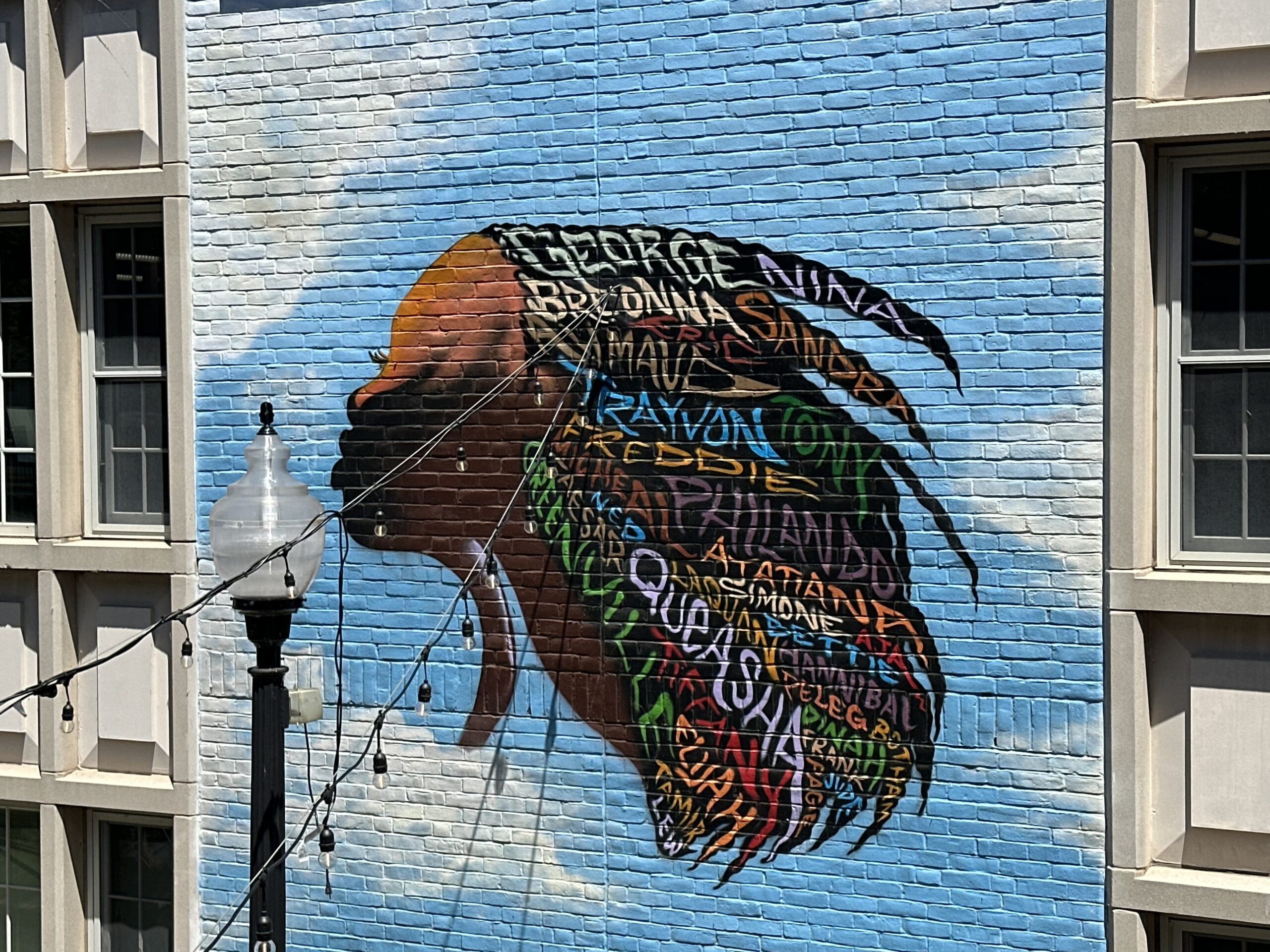
Corey Pane’s mural outside of Noah Webster Library of Flora was inspired by her silhouette. Photo credit: Kaily Martinez
Finding information on enslaved people has been difficult because of the lack of documentation of these individuals. While it has been difficult, students from King Philip Middle School, Renbrook School, Kingswood Oxford School, and Watkinson School all proved that even through limited resources, learning and uncovering even the slightest bit of information about enslaved people and their history can be done.
In 1775, Bristow’s manumission paper had bought his freedom and allowed him to “go and come where and whenever he pleases,” said Wilson. Prior to this, Bristow was captured in Africa, sold to the Hooker family and served in the French and Indian War. Students from King Philip Middle School amplified Bristow’s voice through different art mediums such as poems, paintings or models.
While there was less information on “Freedom Seeker Jude,” fifth-grade students read aloud the reflections they made from what they studied. One student mentioned they learned Jude was smart because he ran away on a Saturday night and brought a forged pass.
At Watkinson School, eighth-grade students were to interpret and research Andrew and Tamar and their three children, Lydia, Isabella and Daniel. The Hartford family was enslaved by the minister of First Church. As students from Watkinson researched the family more, they were left with many more questions, said the head of Watkinson Middle School, Jenny Esposito.
As part of their final project, the students made an artistic representation of the family and community in the form of a quilt to be hung at the First Church of Christ in Hartford, Center Church, “to help commit them to their past,” said Elizabeth Devine, a consultant at Hidden History.
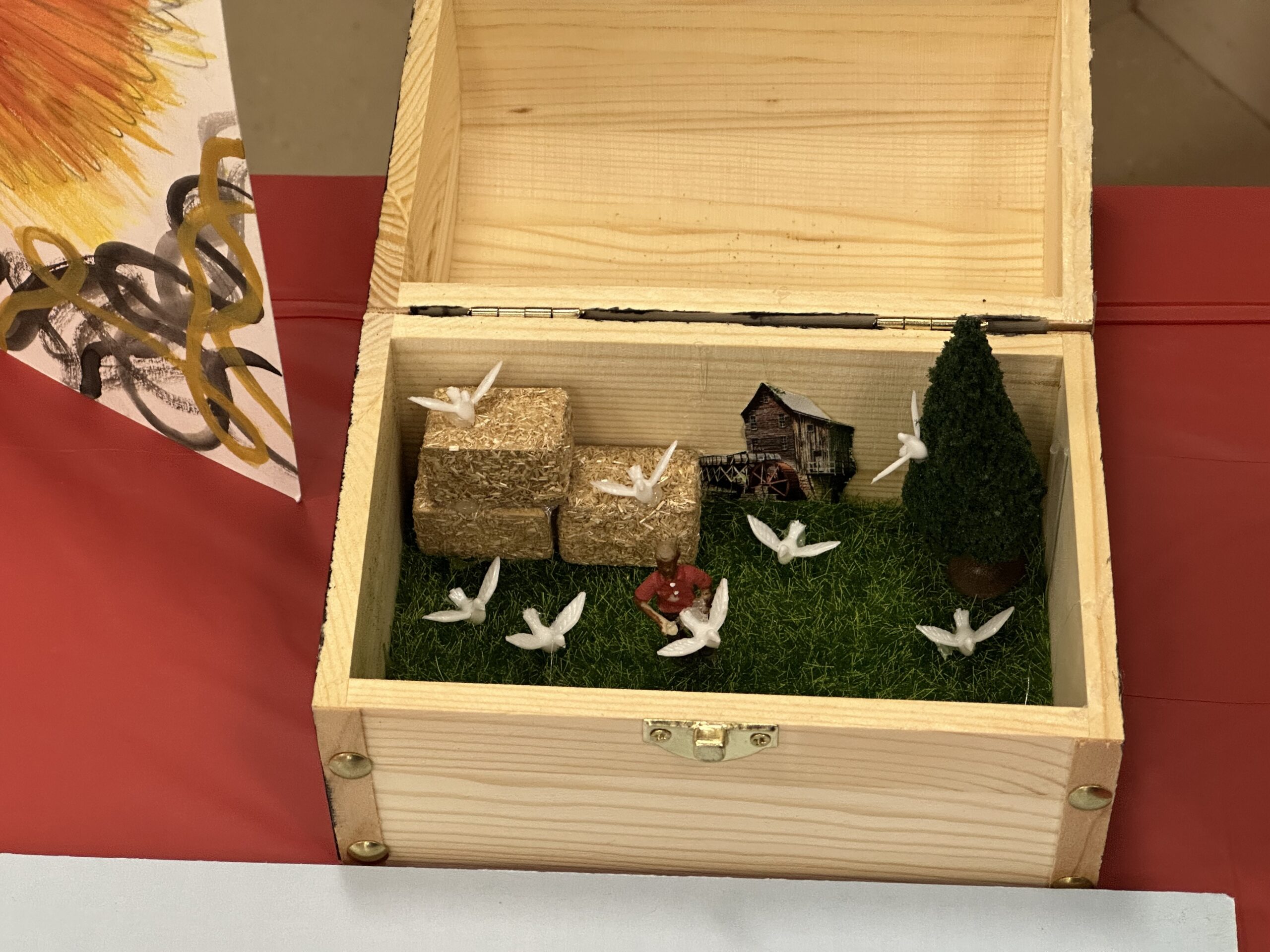
A close-up of a student’s creation in remembrance of Bristow and his life. Photo Credit: Kaily Martinez
The last two enslaved people mentioned were Tack and Chloe, where students from Kingswood Oxford School told their stories. Unfortunately, Tack was unable to self-emancipate and then sold to Thomas Seymour’s son, Henry Seymour, at 21 years old in New York City, 16 months after he tried to free himself. Chloe sought her freedom in 1784 and was able to obtain it.
At Kingswood Oxford, students researched past enslaved people and then installed a plaque in their memory. To showcase their knowledge, students presented what they learned by creating a podcast, a visual presentation and other ways.
As the Juneteenth commemoration came to a close, one of the final speakers was Lorna Thomas-Farquharson, chairperson of the West Hartford Board of Education. As Thomas-Farquharson walked up to the podium, she showed the audience an item and then put it inside a container. Toward the end of her speech, she asked three volunteers to say what they believed went into the jar.
After the volunteers said, an elephant, Thomas-Farquharson said, “Elephants are known for their memory. So even though I had the elephant placed in that container, you couldn’t see the elephant, you all remembered, right? That’s symbolic of what all of you are learning here… it does not have to be in front of you for you to remember, but it’s important for you to always remember.”
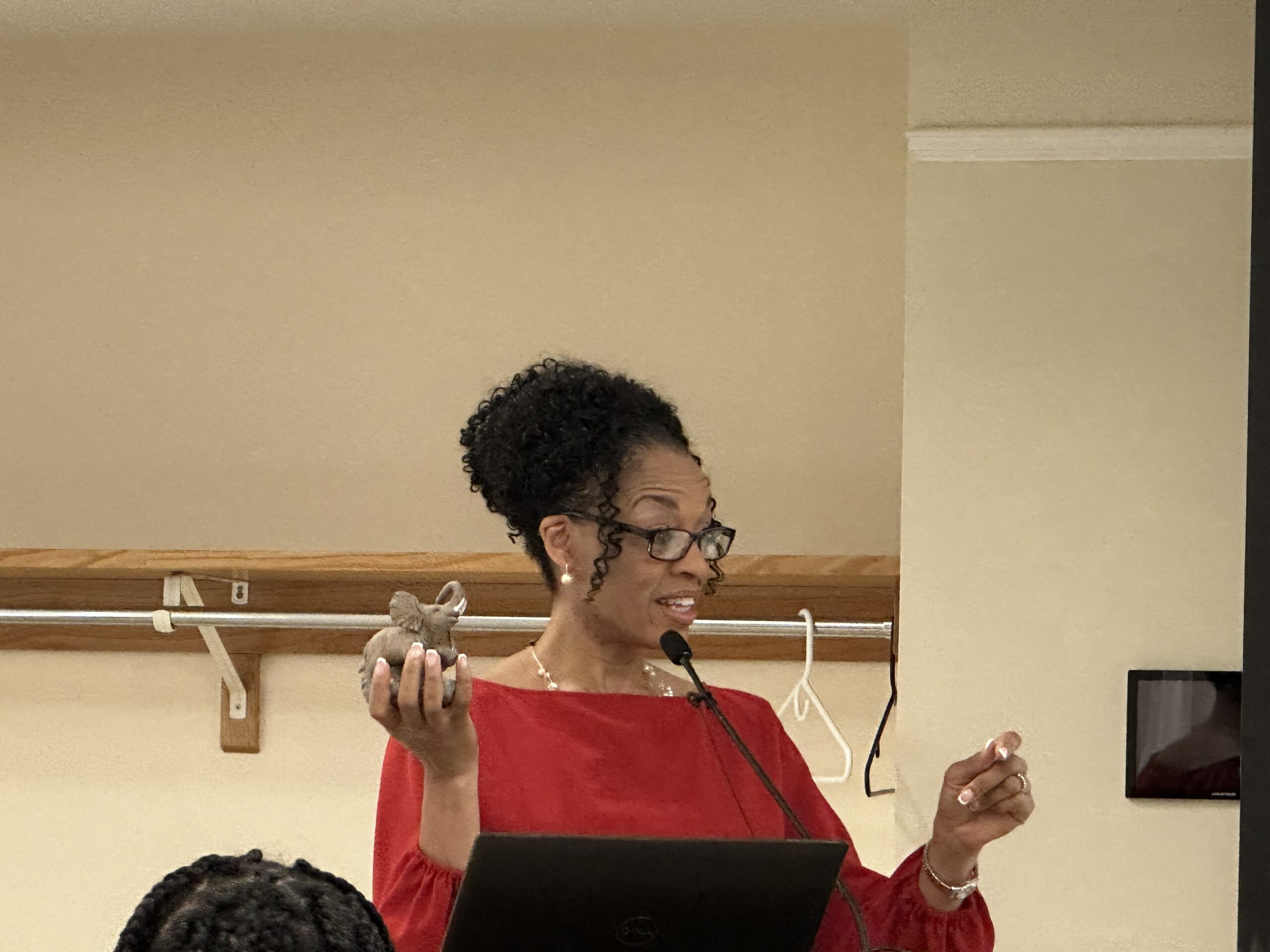
Lorna Thomas-Farquharson holds the elephant she placed inside of the container, symbolizing the audience not forgetting what was learned and history. Photo Credit: Kaily Martinez
“We very much need you and depend on you to help us move forward into the future because you are going to be our leaders,” Thomas-Farquharson said. “The fact you have the courage and resilience to uncover some stuff from the past and talk about it in the present with empathy, with care, with regard, speaks volumes.”
While the Juneteenth commemoration did bring the names of enslaved people to light, the day also included a celebration, which continued in the Town Hall parking lot where dancers and musicians performed, multiple vendors sold their products, and a variety of food was available from food trucks.
During the Friendz World Music performance, the group urged the audience to shout and remember their ancestors on this day. Not only should we remember our ancestors, but we should also remember those around us because we are living history.
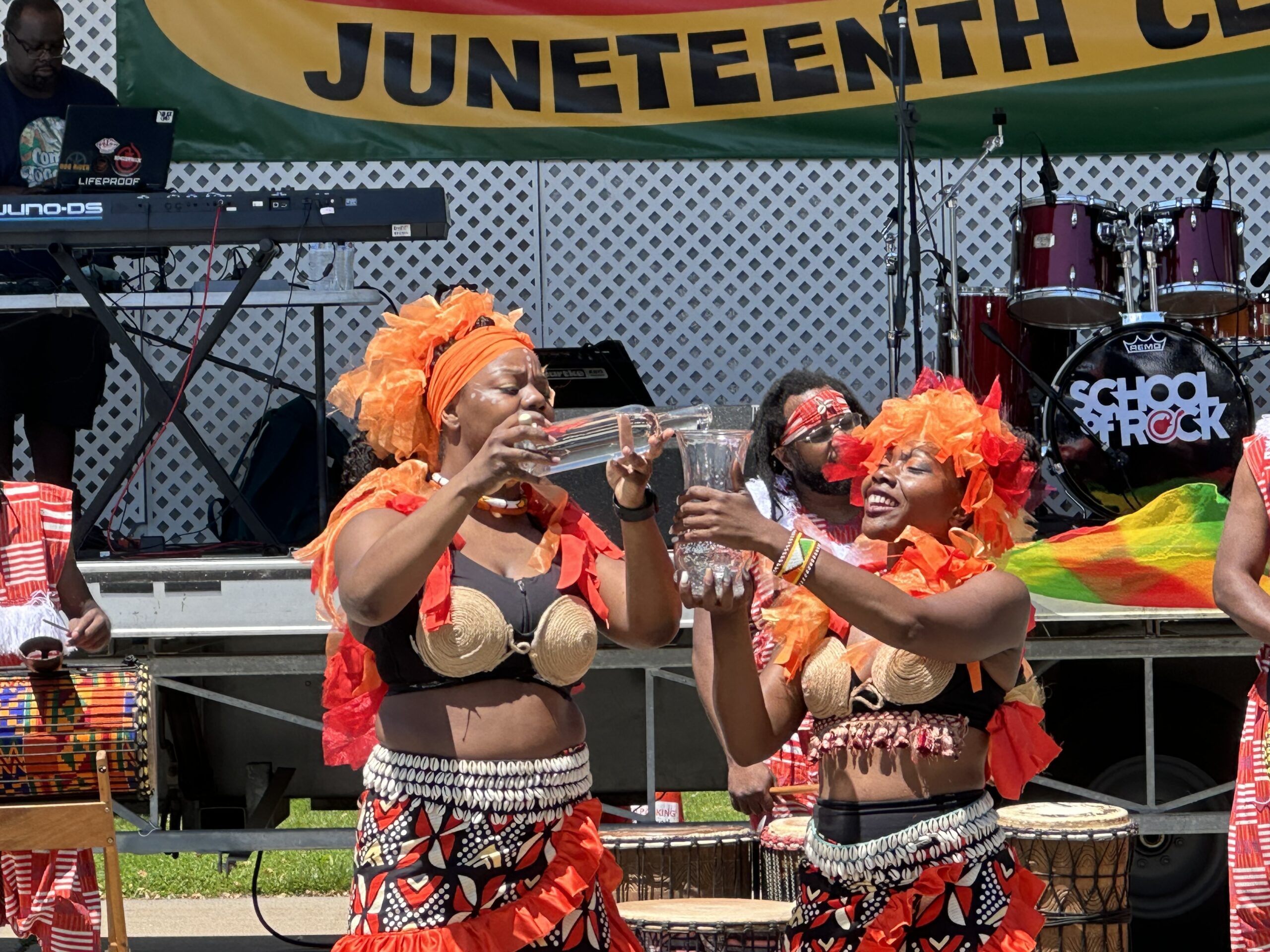
Friendz World Music poured water into a glass container to symbolize the celebration of life. Photo credit: Kaily Martinez
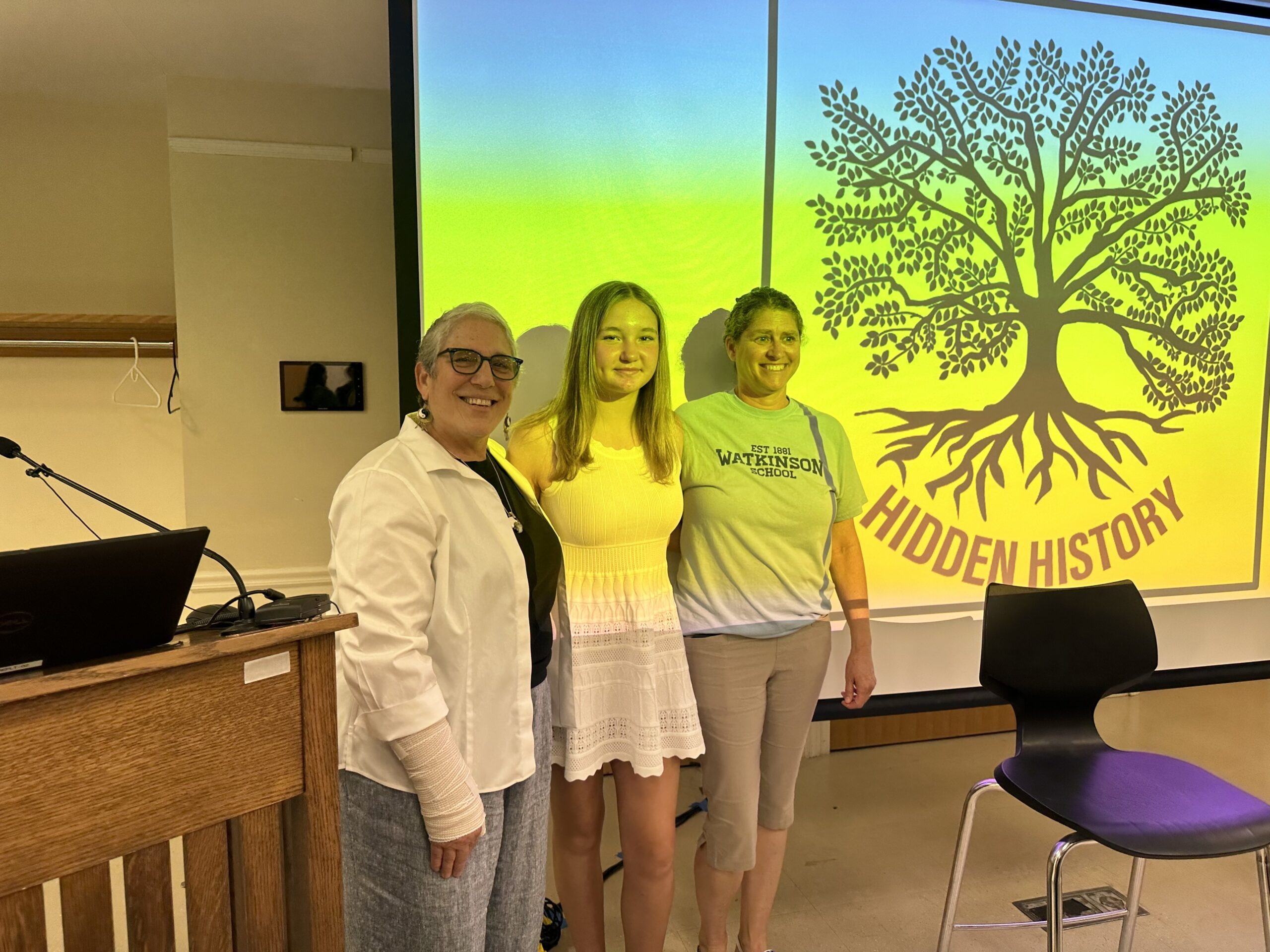
Elizabeth Devine, Harper Jensen, and Jenny Esposito. Photo Credit: Kaily Martinez
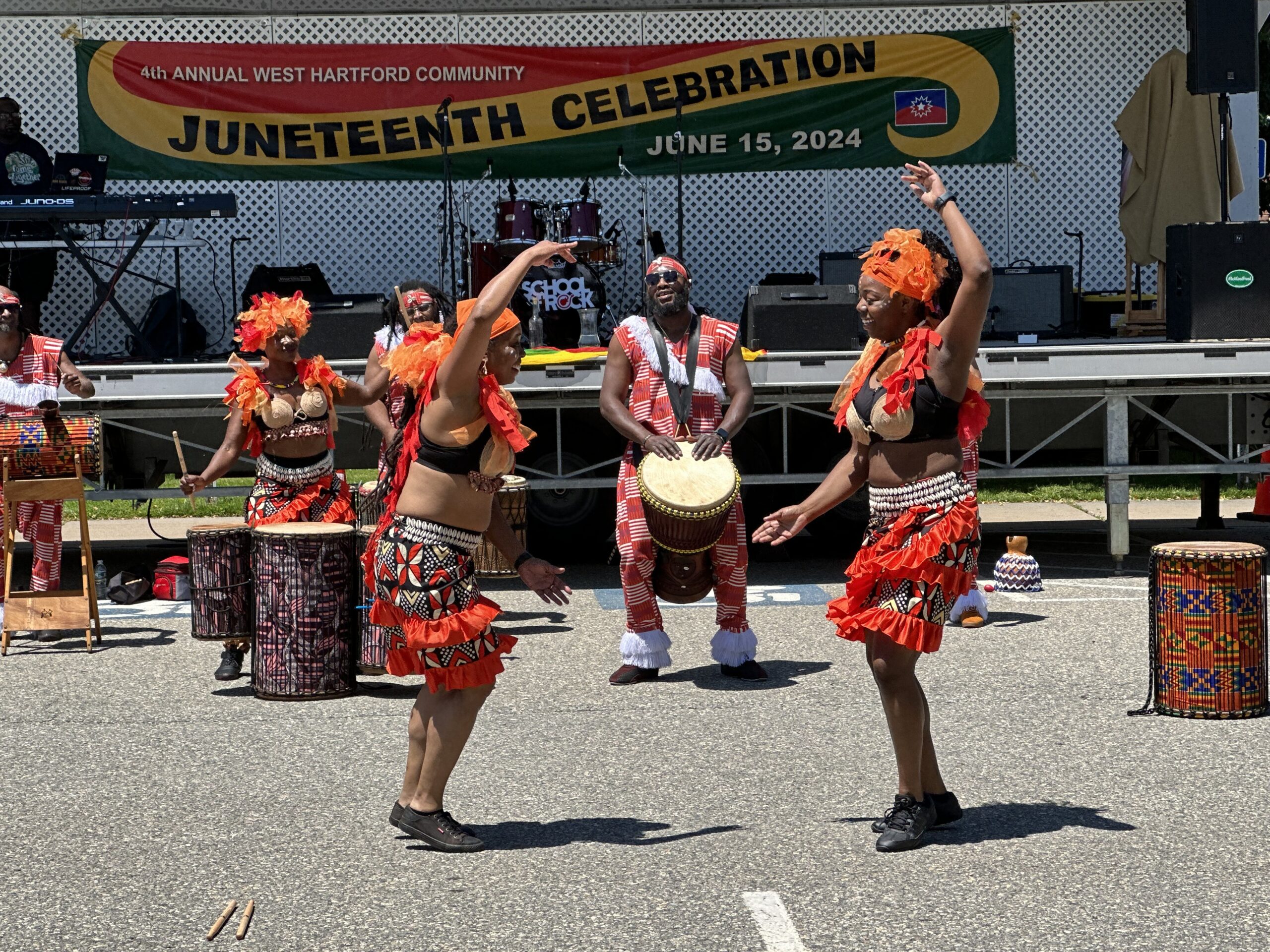
Friendz World Music dancing during West Hartford’s Juneteenth celebration. Photo credit: Kaily Martinez
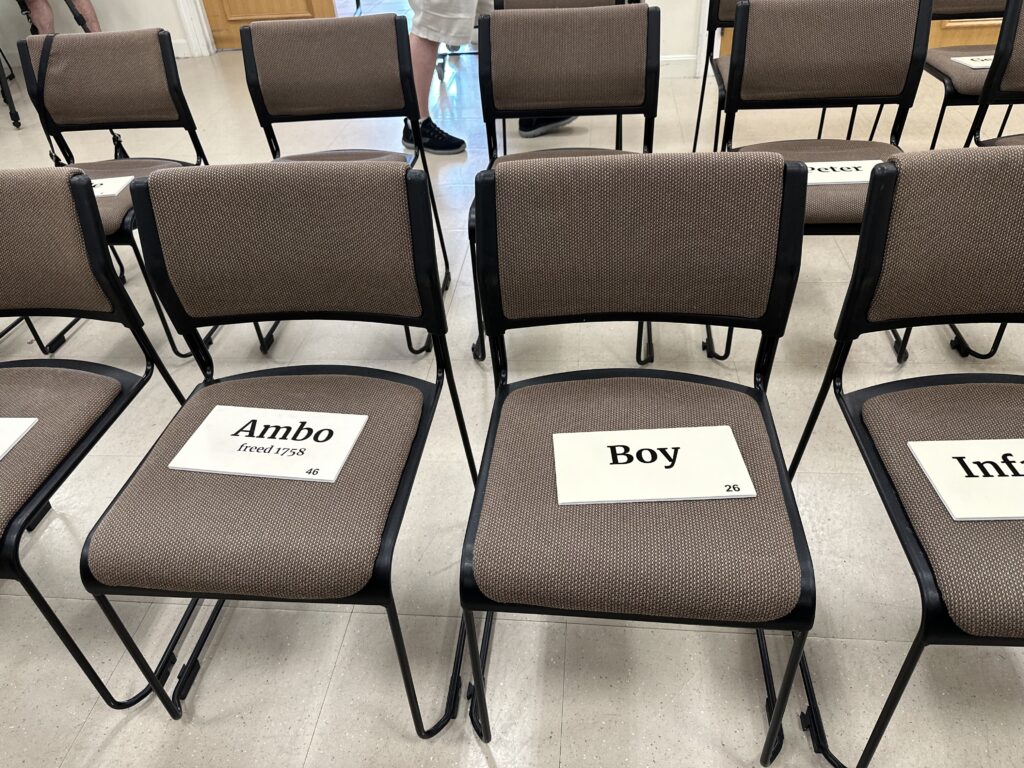
A few of the names that were read aloud of those enslaved. Photo Credit: Kaily Martinez
Like what you see here? Click here to subscribe to We-Ha’s newsletter so you’ll always be in the know about what’s happening in West Hartford! Click the blue button below to become a supporter of We-Ha.com and our efforts to continue producing quality journalism.


